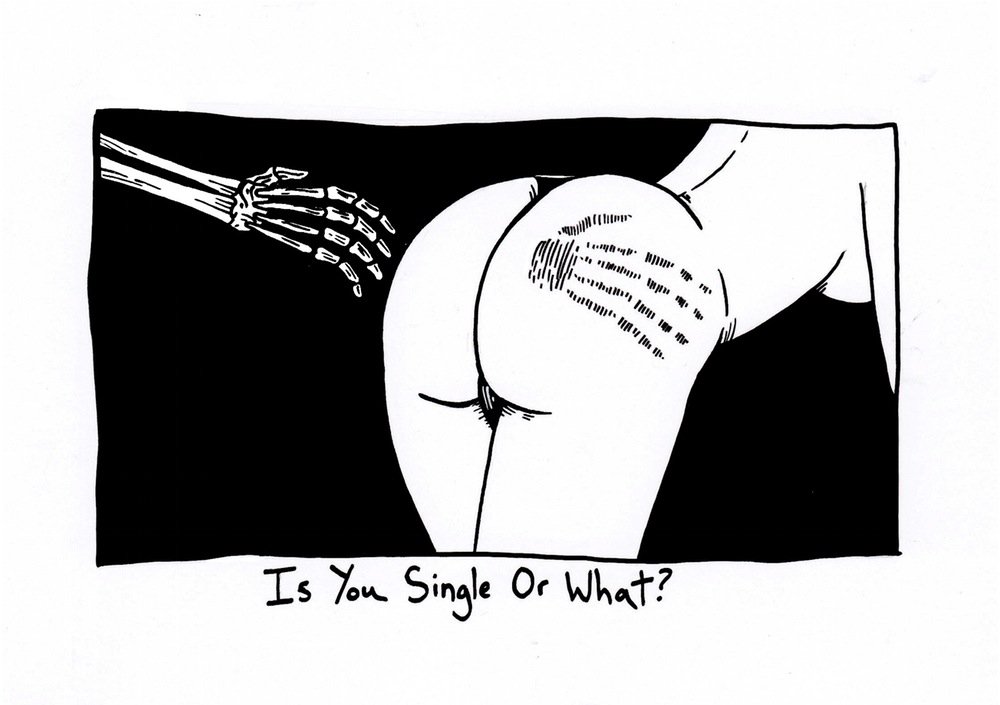Juxtapoz is a magazine that features an array of different genres and art types including; contemporary art, street art, graffiti, illustrative and even old master paintings. The magazine is made by people who enjoy creating art themselves and the editors have a sharp eye for quality so it's not another "anything can be art" experience. It really brings out the underground movement of the modern graffiti pop street-art you see today amongst many other mediums.
Looking through content I was enticed by some of the work of the featured artists. One of those artists being Matthew Palladino, an artist that works with painting and relief sculpture to present pop-looking three dimensional designs that regularly parody reality in content and medium. In the early years of his career during high school he was very engaged with graffiti and spray paints, creating simplistic character design such as devils, angels and sad sack faces. Although his graffiti concepts come across as quite basic I enjoy his choice of colour palette and characters.

Later throughout his career he picked up a fondness for watercolour painting where he experimented with traditional painting. He states that he has never been one for brush strokes, realistic rendering and acrylic painting but watercolour was a different story. I personally have to say that I am very keen on a lot of his watercolour pieces. The colours, themes and composition of his pieces are attractive to my tastes.

When Palladino had reached the limit of what he could do with watercolours he began to introduce fresh new mediums to experiment with such as plaster reliefs. When he started to feel like his paintings were looking flat he was eager to start bringing more form and volume to his work and started off by applying bits and pieces to his work from costumes stores and knick-knack shops to create collages. He experimented with other techniques as well such as mold-making but realised later down the road that it would be an expensive and time consuming process. He settled on plaster reliefs after experimenting with pre-made chocolate molds.
I personally find some of his molds pretty amusing and humorous. I can definitely applaud his workflow and endless efforts of experimenting but I don't think I could really find plaster relief that attractive.
Another artist that has drawn my attention is Edgar Flores, also known as Saner. A painter, street artist and illustrator who demonstrates his broad skill set particularly revolving around the theme of combining contemporary Mexican and ancient Aztec representations of local history and folklore. The subject matter almost always showcasing his awe-inspiring masks. Saner works with graphic design and applies digital techniques to his work. His digital pieces are honestly majestic and mind-blowing; the colours, style and overall appeal of the piece is stunning.
As well as graphics, Saner also has experience in traditional methods including acrylic on canvas. The style and colours are a lot more washed out with his traditional pieces but nonetheless stimulate an alluring sense of artistry - his composition, ideas and concepts are very unique.
Lastly I looked closely at Saner's wall murals, which once again are worked with acrylics. He works very closely with acrylic paints displaying his in-depth knowledge as such, I think compared to Palladino he is more settled on one medium. His designs are totally abstract and brings fresh Mexican visuals that waver between graphic design, graffiti, painting and drawing.
The final featured artist that caught my eye was the work of Adam Neate - known for his on-going series
Dimensionalism, his successful practice where he demonstrates vibrant colours fused and altered around image form. As well as being a well-known street artists across and working with spray cans, aerosols and found objects, he also works with traditional paint.
His abstract and psychedelic looking pieces feature three-dimensional qualities as he works with (much similar to that of Palladino) scrap pieces of materials. Often layering these materials to make figurative images, including self-portraits and portraits of friends.
As well as these unusual and abstract pieces, Neate also has experience in traditional painting. Still as eccentric as his dimensional work but with more of a conventional and established appeal. He once stated that he goes out of his way to avoid painting on canvas, taking to carboard, walls and more to avoid the costly drawback of canvas. I definitely feel like his
Dimensionalism series is some hilariously abstract stuff. Most if not all of his bizarre demeanours I've taken interest in for their surreal looking concepts. I can't say I've seen art like his before which makes him stand out of the crowd. I love it but I hate it.
I think the publication of artists like these is really great exposure and brings out just how abstract pieces of work can be conveyed and mean something deeper than it looks. I have always had conflicted views of the way social media affects artists, maybe because whilst some are very strict about how they enforce what is art, Juxtapoz exposes the movement behind painters and street artists alike.



























